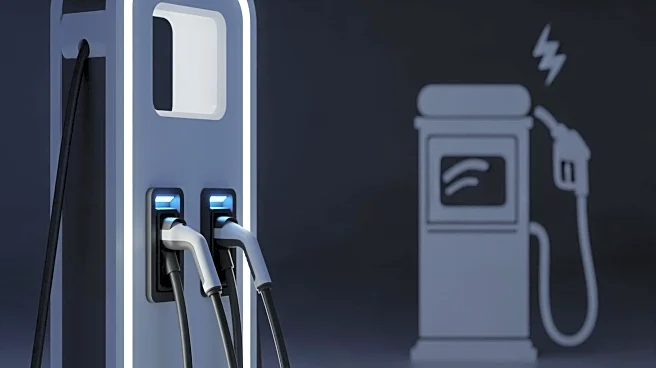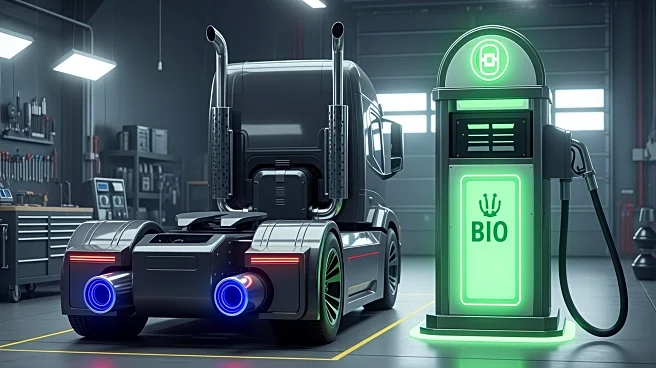What's Happening?
The U.S. oil industry is encountering significant challenges due to rapid production declines from existing wells, particularly horizontal wells. According to the U.S. Energy Information Administration
(EIA), while crude oil and natural gas production have increased, the volume of production declines from existing wells has also risen. To counteract these declines, operators are required to bring new wells online to maintain or increase production levels. Between 2010 and 2024, new wells in the Lower 48 states generally offset and exceeded the declining production from existing wells. However, horizontal wells, which have become more prevalent, exhibit higher decline rates than vertical wells, necessitating more frequent drilling. In December 2023, L48 crude oil production averaged 11.0 million barrels per day, but production from wells that came online in 2023 or earlier fell to 6.7 million barrels per day by December 2024. This decline was offset by over 15,000 new wells, including approximately 11,700 horizontal wells, which produced 4.4 million barrels per day, bringing total production to 11.2 million barrels per day.
Why It's Important?
The challenges faced by the U.S. oil industry have broader implications for the global energy market and the economy. As the demand for oil potentially shrinks due to factors like the rise of electric vehicles, the economic viability of drilling new wells comes into question. Companies need to ensure a return on investment, but if oil demand decreases, profitability may be at risk. This situation could lead to a reevaluation of investment strategies within the industry. Additionally, the global nature of the oil market means that U.S. companies face competition from regions where oil extraction is cheaper and easier. The potential decline in demand and the need for new wells to sustain production levels could lead to significant shifts in the industry, affecting jobs, energy prices, and the broader economy.
What's Next?
The future of the U.S. oil industry may involve strategic decisions regarding production levels and investment in new technologies. As the global trend towards vehicle electrification accelerates, the industry might need to adapt by exploring alternative energy sources or improving efficiency. Stakeholders, including policymakers and industry leaders, may need to consider the long-term sustainability of current practices and the potential for innovation in energy production. The industry's response to these challenges will likely influence its role in the global energy landscape and its impact on the U.S. economy.
Beyond the Headlines
The situation highlights the complex interplay between energy production, environmental concerns, and economic interests. The reliance on horizontal wells, despite their higher decline rates, underscores the industry's need to balance immediate production goals with long-term sustainability. Additionally, the potential decrease in oil demand raises questions about the environmental impact of continued drilling and the industry's role in addressing climate change. As the world moves towards cleaner energy sources, the oil industry may face increased pressure to reduce its carbon footprint and contribute to global sustainability efforts.












